Kyoto, the cultural heart of Japan, has long captivated travelers from around the world. Often referred to as the "City of the Dreams," it’s easy to see why this ancient capital enchants visitors with its iconic temples, serene gardens, and exquisite culinary delights. Navigating the winding streets, one can’t help but uncover hidden gems, from quaint teahouses to artisanal workshops that showcase the city’s rich heritage. But Kyoto’s allure goes beyond its tangible attractions – it’s the way it seamlessly blends tradition and modernity, inviting visitors to step into a realm where the past and present coexist harmoniously. Delving deeper into this enchanting city, one soon realizes why Kyoto is considered a destination of dreams.
Key Points
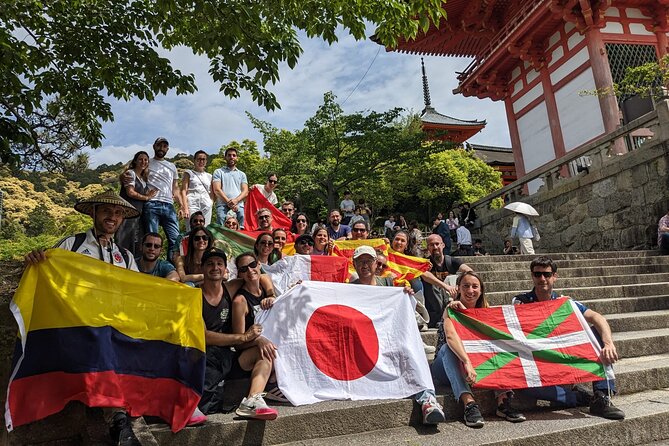
- Kyoto’s timeless allure lies in its captivating blend of iconic cultural landmarks, serene gardens, and immersive geisha heritage.
- Navigating Kyoto’s winding streets unveils hidden gems, from tranquil teahouses to artisanal workshops, fostering a sense of discovery.
- Kyoto’s historic shrines and temples offer a profound connection to Japan’s spiritual roots, inviting visitors to witness rituals and immerse in contemplation.
- Indulging in Kyoto’s exquisite culinary offerings, from seasonal kaiseki cuisine to innovative matcha-infused desserts, celebrates the region’s rich gastronomic heritage.
- Kyoto’s architectural marvels, from the iconic Golden Pavilion to the serene Zen gardens, showcase Japan’s refined aesthetics and engineering prowess.
Discover Kyoto’s Cultural Gems
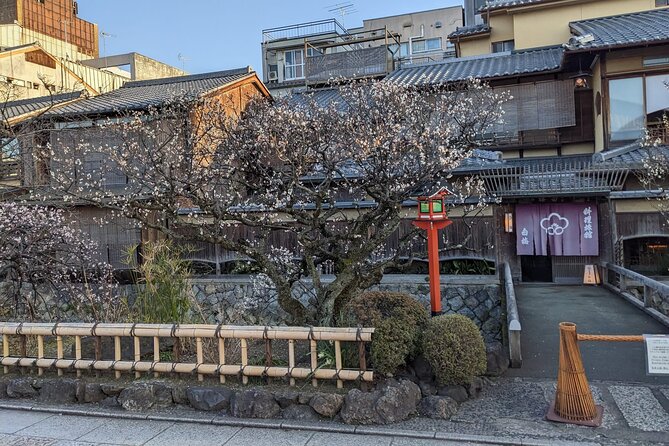
Setting out on a cultural exploration of Kyoto, visitors can discover the city’s iconic temples, shrines, and UNESCO World Heritage sites that have long captivated the imagination of travelers from around the world.
From the serene Kinkakuji Temple, also known as the Golden Pavilion, to the majestic Kiyomizudera with its striking wooden structure, these cultural gems offer a window into Japan’s rich heritage.
Walking through the charming alleyways of the Gion district, visitors can enjoy the captivating world of geisha culture.
Whether it’s witnessing a traditional tea ceremony or admiring the intricate artistry of Kyoto’s kimono makers, the city’s cultural experiences are truly unforgettable.
You can also read our reviews of more city tours in Kyoto
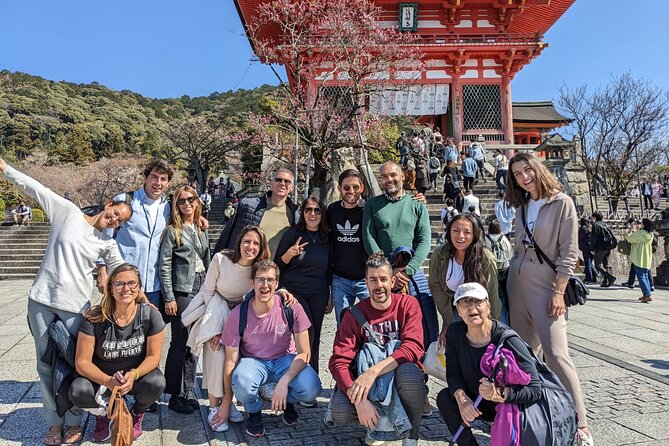
Navigating Kyoto’s winding streets is a captivating experience, as visitors weave through a tapestry of narrow alleyways, traditional machiya houses, and bustling market stalls.
With a keen eye and a sense of adventure, travelers can discover hidden gems, from quaint teahouses to artisanal workshops.
The city’s grid-like layout can be daunting at first, but a few simple tips can help make the most of the exploration.
Refer to a map, ask locals for directions, and allow ample time to wander.
Experiencing Kyoto’s Serene Gardens
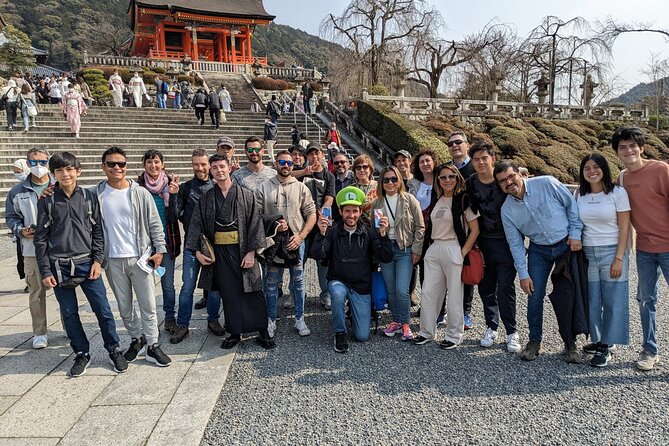
Amidst Kyoto’s winding streets and bustling marketplaces, visitors can find solace in the city’s serene gardens, where tranquility and natural beauty converge.
These meticulously curated spaces offer a respite from the urban pace, inviting travelers to slow down, observe, and connect with the essence of Japanese aesthetics.
From the iconic Kinkakuji, or Golden Pavilion, with its shimmering reflection on the pond, to the Arashiyama Bamboo Grove, where towering stalks sway in the breeze, Kyoto’s gardens captivate the senses.
Whether strolling through the perfectly manicured Nijo Castle gardens or finding zen in the Tenryuji temple complex, visitors can enjoy the harmony of nature and architecture that defines Kyoto’s serene sanctuary.
Exploring Kyoto’s Historic Shrines
Visitors often discover that Kyoto’s historic shrines are windows into the city’s rich spiritual heritage, offering glimpses into centuries-old traditions and architectural marvels.
Among the must-visit shrines is the iconic Kiyomizu-dera, a UNESCO World Heritage Site perched atop a hillside with stunning views of the city. Equally impressive is the serene Fushimi Inari-taisha, famous for its thousands of vermilion torii gates winding through the forested hills.
Exploring these sacred spaces allows travelers to enjoy Shinto and Buddhist practices, from purification rituals to the delicate interplay of light and shadow. Whether admiring the intricate carvings or observing worshippers in quiet contemplation, Kyoto’s shrines provide a profound connection to Japan’s spiritual roots.
Indulging in Kyoto’s Culinary Delights
Beyond the historic shrines, Kyoto tantalizes travelers with its renowned culinary scene, offering a diverse array of traditional and innovative delicacies that celebrate the region’s seasonal bounty.
Visitors can indulge in the exquisite flavors of Kyoto-style kaiseki, a multi-course meal featuring meticulously presented seasonal ingredients.
Kyoto is also renowned for its vibrant food markets, where locals and travelers alike can browse an array of fresh produce, specialty goods, and artisanal street food.
From the iconic matcha-infused sweets to the savory okonomiyaki pancakes, Kyoto’s culinary offerings provide a delightful exploration of the city’s rich cultural heritage and contemporary gastronomic creativity.
Taking in Kyoto’s Geisha Heritage
Kyoto’s geisha culture offers travelers a unique window into the city’s refined artistic traditions, where elegant geisha entertain guests with captivating dances, mesmerizing music, and scintillating conversation. Visitors can enjoy this enchanting world by participating in a geisha-themed walking tour. These tours typically include a visit to the Gion district, the heart of Kyoto’s geisha community, and a chance to witness a private geisha performance. Guests may also have the opportunity to dress up in traditional geisha attire and learn the art of Japanese tea ceremony. Exploring Kyoto’s geisha heritage is a truly unforgettable experience that transports visitors back in time to the city’s golden age of art and elegance.
| Geisha Cultural Tour Highlights | |||
|---|---|---|---|
| Visit Gion District | Witness Geisha Performance | Dress Up in Geisha Attire | Learn Japanese Tea Ceremony |
| Explore the heart of Kyoto’s geisha community | Observe the captivating dances and music of geisha | Enjoy the traditional kimono and makeup | Discover the refined art of Japanese tea preparation and etiquette |
Unraveling Kyoto’s Architectural Marvels
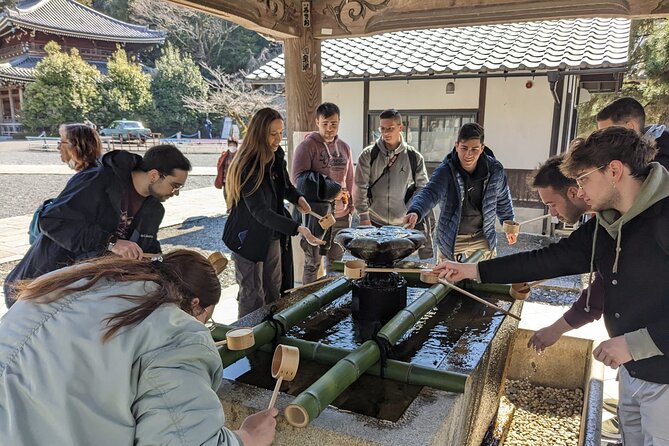
While Kyoto’s geisha heritage offers a captivating glimpse into the city’s artistic traditions, the architectural marvels that dot its landscape are equally mesmerizing.
From the iconic pagodas of Kiyomizu-dera to the serene Zen gardens of Tenryū-ji, Kyoto’s buildings and landscapes showcase the refined aesthetics and engineering prowess that have defined Japanese design for centuries.
Visitors can marvel at the intricate wooden structures of Kinkaku-ji, the Golden Pavilion, or enjoy the tranquility of Arashiyama’s bamboo forest.
Whether exploring the grand imperial palaces or the charming machiya townhouses, travelers are sure to be enchanted by Kyoto’s architectural wonders that seamlessly blend tradition and modernity.
Kyoto: A Blend of Traditions
Kyoto seamlessly blends its rich cultural heritage with modern sensibilities, offering visitors a captivating experience that transcends time.
The city’s temples, shrines, and gardens, many dating back centuries, stand as testament to Japan’s storied past.
Yet, Kyoto also embraces the contemporary, with cutting-edge architecture, innovative cuisine, and a vibrant arts scene.
Visitors can enjoy traditional tea ceremonies, wander through tranquil bamboo forests, or explore the neon-lit streets of the Gion district, home to the city’s famous geisha.
Whether seeking to uncover Kyoto’s ancient roots or experience its dynamic present, travelers find a harmonious balance of old and new that makes the city truly unique.
Frequently Asked Questions
What Is the Pickup and Drop-Off Location for the Tour?
The meeting point for the tour is Sanjo Station, exit 6 at the Kamogawa river, and the end point is Kiyomizu-dera temple. Travelers should plan to meet at the specified location for pickup and return there at the end of the tour.
What Is the Maximum Group Size for the Tour?
The maximum group size for the tour is 20 travelers. The tour operator limits the group size to ensure a personalized experience and allow for easy navigation through the city’s historic sites.
What Is the Cancellation Policy for the Tour?
The cancellation policy for the tour is that a full refund is provided if it’s canceled at least 24 hours in advance. Plus, there’s a minimum number of travelers required, or an alternative date/experience is offered.
Is There a Minimum Number of Travelers Required for the Tour?
The tour has a minimum number of travelers required. If the minimum is not met, the tour operator will offer an alternative date or experience. Customers can get a full refund if they cancel at least 24 hours in advance.
What Types of Activities and Souvenirs Are Included in the Tour?
The tour includes cultural activities like walking tours, as well as souvenirs to take home. Specific inclusions may vary, so travelers should check the tour details to see what’s offered.
Recap
Kyoto’s timeless appeal captivates visitors, offering a harmonious blend of tradition and modernity.
From its iconic temples and shrines to its serene gardens and exquisite cuisine, the city transports travelers to a realm where the past and present coexist.
Kyoto’s allure lies in its ability to immerse visitors in a rich cultural heritage, making it a truly remarkable destination.
More City Tours in Kyoto
More Tour Reviews in Kyoto
- Kyoto: Discover Every Bit of Ginkakuji Temple in 60 Minutes
- Private Full-Day Walking Tour of Kyoto
- Hidden Temples in Kyoto a Self-Guided Zen Tour
- 2 Hour Private Tour of Arashiyama Highlights
- Nara 9hr Tour Licensed Guide&Vehicle: Kyoto Pickup/Osaka Dropoff
- Kyoto: Half-Day Private Tour Gion Geisha Districts & Kiyomizu
Not for you? Here's more nearby things to do in Kyoto we have reviewed
- Hidden Kyoto- Countryside & Local Life – Private Car Tour
- Kyoto: Discover Every Bit of Ginkakuji Temple in 60 Minutes
- Private Full-Day Walking Tour of Kyoto
- Hidden Temples in Kyoto a Self-Guided Zen Tour
- 2 Hour Private Tour of Arashiyama Highlights
- One Way Bus From Kanazawa to Kyoto
- Nara 9hr Tour Licensed Guide&Vehicle: Kyoto Pickup/Osaka Dropoff
- Original Pizza Making Using Kyoto Vegetable at BNR Night Farm
- Kyoto 8 Hr Tour From Osaka: English Speaking Driver, No Guide
- Kyoto: Half-Day Private Tour Gion Geisha Districts & Kiyomizu
- Kyoto Sweets & Desserts Tour With a Local Foodie: Private & Custom
- Arashiyama Autumn Leaves & Sanzen-In Temple Tour From Osaka/Kyoto
